The Republic of South Africa is a parliamentary democracy comprising nine provinces which is located at the southern tip of Africa, with a 2,798 kilometres (1,739 mi) coastline[7][8] on theAtlantic and Indian Oceans.[9] To the north lie Namibia, Botswana and Zimbabwe; to the east are Mozambique and Swaziland; while Lesotho is an enclave surrounded by South African territory.[10]
South Africa is known for a diversity in cultures and languages. Eleven official languages are recognised in the constitution.[9] Two of these languages are of European origin: Afrikaans, a language which originated mainly from Dutch that is spoken by the majority of white andColoured South Africans, and South African English. Though English is commonly used in public and commercial life, it is only the fifth most-spoken home language.[9]
South Africa is ethnically diverse. About 79.5% of the South African population is of black African ancestry,[4] divided among a variety of ethnic groups speaking different Bantu languages, nine of which have official status.[9] South Africa also contains the largest communities of European, Asian, and racially mixed ancestry in Africa. About a quarter of the population is unemployed[11] and lives on less than US $1.25 a day.[12]
South Africa is a constitutional democracy in the form of a parliamentary republic; unlike most parliamentary republics, the positions of head of state and head of government are merged in a parliament-dependent President. It is one of the founding members of the African Union, and has the largest economy of all the members. It is also a founding member of the United Nations and NEPAD. South Africa is a member of the Commonwealth of Nations, Antarctic Treaty System, Group of 77, South Atlantic Peace and Cooperation Zone, Southern African Customs Union, World Trade Organization, International Monetary Fund, G20 and G8+5.
History
South Africa contains some of the oldest archaeological sites in the world.[13][14][15] Extensivefossil remains at the Sterkfontein, Kromdraai and Makapansgat caves suggest that variousaustralopithecines existed in South Africa from about three million years ago.[16] These were succeeded by various species, including Homo habilis, Homo erectus and modern humans,Homo sapiens.
Settlements of Bantu-speaking peoples, who were iron-using agriculturists and herdsmen, were already present south of the Limpopo River (now the northern border with Botswana and Zimbabwe) by the fourth or fifth century CE. (see Bantu expansion). They displaced, conquered and absorbed the original Khoisan speakers, the Khoikhoi and San peoples. The Bantu slowly moved south. The earliest ironworks in modern-day KwaZulu-Natal Province are believed to date from around 1050. The southernmost group was the Xhosa people, whose language incorporates certain linguistic traits from the earlier Khoisan people. The Xhosa reached theGreat Fish River, in today's Eastern Cape Province. As they migrated, these larger Iron Agepopulations displaced or assimilated earlier peoples, who often had hunter-gatherer societies[citation needed].
Modern humans have inhabited Southern Africa for more than 100,000 years. At the time of European contact, the dominant indigenous peoples were Bantu-speaking peoples who had migrated from other parts of Africa about one thousand years before. The two major historic groups were the Xhosa and Zulu peoples.
| Historical states in present-day South Africa | |||
|---|---|---|---|
 | |||
| |||
| |||
| |||
| |||
| |||
| |||
| |||
| more |
In 1487, the Portuguese explorer Bartolomeu Diasbecame the first European known to have reached southern Africa. On December 4, he landed atWalfisch Bay (now known as Walvis Bay in present day Namibia). This was south of the furthest point reached in 1485 by his predecessor, the Portuguese navigator Diogo Cão (Cape Cross, north of the bay). Dias continued down the western cost of southern Africa. After 8 January 1488, prevented by storms from proceeding along the coast, he sailed out of sight of land and passed the southernmost point of Africa without seeing it. After he had reached as far up the eastern coast of Africa as what he called Rio do Infante, probably present-day [[Groot River (Eastern Cape), in May 1488 on his return he saw the Cape, which he first named Cabo das Tormentas (Cape of Storms). His King, John II, renamed the point Cabo da Boa Esperança or Cape of Good Hope, as it led to the riches of the East Indies.[17] Dias' feat of navigation was later memorialized in Camões' epic Portuguese poem, The Lusiads (1572).
In 1652, a century and a half after the discovery of the Cape Sea Route, Jan van Riebeeckestablished a refreshment station at the Cape of Good Hope, at what would become Cape Town,[18] on behalf of the Dutch East India Company. The Dutch transported slaves from Indonesia, Madagascar, and India as labour for the colonists in Cape Town. As they expanded east, the Dutch settlers met the southwesterly migrating Xhosa people in the region of the Fish River. A series of wars, called the Cape Frontier Wars, ensued, caused by thei conflicting land and livestock interests.
The discovery of diamonds and later gold triggered the 19th-century conflict known as the Anglo-Boer War, as the Boers (original Dutch,Flemish, German and French settlers) and the British fought for the control of the South African mineral wealth. Cape Town became a British colony in 1806. European settlement expanded during the 1820s as the Boers and the British 1820 Settlers claimed land in the north and east of the country. Conflicts arose among the Xhosa, Zulu and Afrikaner groups who competed for territory.
Great Britain took over the Cape of Good Hope area in 1795, to prevent it from falling under control of the French First Republic, which hadinvaded the Dutch Republic. Given its standing interests in Australia and India, Great Britain wanted to use Cape Town as an interim port for its merchants' long voyages. The British returned Cape Town to the Dutch in 1803, but soon afterwards the Dutch East India Company declared bankruptcy.
The British annexed the Cape Colony in 1806. The British continued the frontier wars against the Xhosa, pushing the eastern frontier through a line of forts established along the Fish River. They consolidated the territory by encouraging British settlement. Due to pressure ofabolitionist societies in Britain, the British parliament stopped its global slave trade with the passage of the Slave Trade Act 1807, then abolished slavery in all its colonies with the Slavery Abolition Act 1833.
In the first two decades of the 19th century, the Zulu people grew in power and expanded their territory under their leader, Shaka.[19] Shaka’s warfare led indirectly to the Mfecane (“Crushing”) that devastated the inland plateau in the early 1820s.[20] An offshoot of the Zulu, the Matabele people created a larger empire under their king Mzilikazi, including large parts of the highveld.
During the 1830s, approximately 12,000 Boers (later known as Voortrekkers), departed from the Cape Colony, where they had been subjected to British control. They migrated to the future Natal, Orange Free State and Transvaal regions. The Boers founded the Boer Republics: the South African Republic (now Gauteng, Limpopo, Mpumalanga and North West provinces) and the Orange Free State (Free State).
The discovery of diamonds in 1867 and gold in 1884 in the interior encouraged economic growth and immigration, the so called Mineral Revolution. This intensified the European-South African subjugation of the indigenous people. The struggle to control these important economic resources was a factor between Europeans and the indigenous population, and also between the Boers and the British.[21]
The Boer Republics successfully resisted British encroachments during the First Boer War (1880–1881) using guerrilla warfare tactics, which were well suited to local conditions. However, the British returned with greater numbers, more experience, and new strategy in the Second Boer War (1899–1902), which they won.
20th century
Main article: South Africa under apartheid
Within the country, anti-British policies among white South Africans focused on independence. During the Dutch and British colonial years,racial segregation was mostly informal, though some legislation were enacted to control the settlement and movement of native people, including the Native Location Act of 1879 and the system of pass laws.[22][23][24] Power was held by the ethnic European colonists.
After four years of negotiating, the South Africa Act 1909 created the Union of South Africa from the Cape and Natal colonies, as well as the republics of Orange Free State and Transvaal, on 31 May 1910, eight years after the end of the Second Boer War. The newly created Union of South Africa was a dominion of the British Empire. The Natives' Land Act of 1913 severely restricted the ownership of land by blacks; at that stage natives controlled only 7% of the country. The amount of land reserved for indigenous peoples was later marginally increased.[25]
In the Boer republics,[26] from as early as the Pretoria Convention (chapter XXVI),[27] and subsequent South African governments, the legislature passed legally institutionalised segregation, later known as apartheid. The government established three racial classes: white, coloured (people of Asian or mixed racial ancestry), and black, with rights and restrictions for each.
In 1931 the union was effectively granted independence from the United Kingdom with the passage of the Statute of Westminster. In 1934, theSouth African Party and National Party merged to form the United Party, seeking reconciliation between Afrikaners and English-speaking "Whites". In 1939 the party split over the entry of the Union into World War II as an ally of the United Kingdom, a move which the National Party followers strongly opposed.
In 1948, the National Party was elected to power. It strengthened the racial segregation begun under Dutch and British colonial rule, and subsequent South African governments since the Union was formed[citation needed]. The Nationalist Government classified all peoples into three races, developed rights and limitations for each, such as pass laws and residential restrictions[citation needed]. The white minority controlled the vastly larger black majority. The system of segregation became known collectively as apartheid.
While the White minority enjoyed the highest standard of living in all of Africa, comparable to First World Western nations, the Black majority remained disadvantaged by almost every standard, including income, education, housing, and life expectancy. On 31 May 1961, following a whites-only referendum, the country became a republic and left the Commonwealth. Queen Elizabeth IIceased to be head of state, and the last Governor-General became State President.
Despite opposition both within and outside the country, the government legislated for a continuation of apartheid. Apartheid became increasingly controversial, and some Western nations and institutions began to boycott doing business with South Africa because of its racial policies and oppression of civil rights. [International sanctions]], divestment of holdings by investors accompanied growing unrest and oppression within South Africa. The government harshly oppressed resistance movements, and violence became widespread, with anti-apartheid activists using strikes, marches, protests, and sabotage by bombing and other means. The African National Congress (ANC) was a major resistance movement.
In the late 1970s, South Africa began a programme of nuclear weapons development. In the following decade, it produced six deliverable nuclear weapons.[28][29]
The Mahlabatini Declaration of Faith, signed by Mangosuthu Buthelezi and Harry Schwarz in 1974, enshrined the principles of peaceful transition of power and equality for all, the first of such agreements by acknowledged black and white political leaders in South Africa. Ultimately, F.W. de Klerk negotiated with Nelson Mandela in 1993 for a transition of policies and government.
In 1990 the National Party government took the first step towards dismantling discrimination when it lifted the ban on the African National Congress and other political organisations. It released Nelson Mandela from prison after twenty-seven years' serving a sentence for sabotage. A negotiation process followed. The government repealed apartheid legislation. South Africa destroyed its nuclear arsenal and acceded to theNuclear Non-Proliferation Treaty. South Africa held its first universal elections in 1994, which the ANC won by an overwhelming majority. It has been in power ever since. The country rejoined the Commonwealth of Nations.
In post-apartheid South Africa, unemployment has been extremely high as the country has struggled with many changes. While many blacks have risen to middle or upper classes, the overall unemployment rate of blacks worsened between 1994 and 2003.[30] Poverty among whites, previously rare, increased.[31] While some have attributed this partly to the legacy of apartheid, increasingly many attribute it to the failure of the current government's policies. In addition, the current government has struggled to achieve the monetary and fiscal discipline to ensure both redistribution of wealth and economic growth. Since the ANC-led government took power, the United Nations Human Development Indexof South Africa has fallen, while it was steadily rising until the mid-1990s.[32] Some may be attributed to the AIDS pandemic, and the failure of the government to take steps to address it in the early years.[33]
Government and politics
Main articles: Government of South Africa, Politics of South Africa, Provinces of South Africa, Law of South Africa, and President of South Africa
South Africa has three capital cities: Cape Town, the largest of the three, is the legislative capital;Pretoria is the administrative capital; and Bloemfontein is the judicial capital. South Africa has abicameral parliament: the National Council of Provinces (the upper house) has 90 members, while the National Assembly (the lower house) has 400 members.
Members of the lower house are elected on a population basis by proportional representation: half of the members are elected from national lists and the other half are elected from provincial lists. Ten members are elected to represent each province in the National Council of Provinces, regardless of the population of the province. Elections for both chambers are held every five years. The government is formed in the lower house, and the leader of the majority party in the National Assembly is the President.
The primary sources of South Africa law are Roman-Dutch mercantile law and personal law withEnglish Common law, as imports of Dutch settlements and British colonialism.[34] The first European based law in South Africa was brought by the Dutch East India Company and is calledRoman-Dutch law. It was imported before the codification of European law into the Napoleonic Code and is comparable in many ways to Scots law. This was followed in the 19th century byEnglish law, both common and statutory. Starting in 1910 with unification, South Africa had its own parliament which passed laws specific for South Africa, building on those previously passed for the individual member colonies. During the years of apartheid, the country's political scene was dominated by figures like B. J. Vorster and P. W. Botha, as well as opposition figures such asHarry Schwarz, Joe Slovo and Helen Suzman.
Since the end of apartheid in 1994, South African politics have been dominated by the African National Congress (ANC), which has been the dominant party with 60–70% of the vote. The main challenger to the rule of the ANC is the Democratic Alliance party, which received 16.7% of the vote in the 2009 election and 14.8% in the 2006 election.
The formerly dominant New National Party, which introduced apartheid through its predecessor, the National Party, chose to merge with the ANC on 9 April 2005. Other major political parties represented in Parliament are the Congress of the People, which split from the ANC and won 7.4% of the vote in 2009, and the Inkatha Freedom Party, which mainly represents Zulu voters and took 4.6% of the vote in the 2009 election.
Since 2004, the country has had many thousands of popular protests, some violent, making it, according to one academic, the "most protest-rich country in the world".[35] Many of these protests have been organised from the growing shanty towns that surround South African cities.
In 2008, South Africa placed 5th out of 48 sub-Saharan African countries on the Ibrahim Index of African Governance. South Africa scored well in the categories of Rule of Law, Transparency & Corruption and Participation & Human Rights, but was let down by its relatively poor performance in Safety & Security. The Ibrahim Index is a comprehensive measure of African governance, based on a number of different variables which reflect the success with which governments deliver essential political goods to its citizens.[36]
After the end of apartheid in 1994, the "independent" and "semi-independent" Bantustans were integrated into the political structure of South Africa by the abolition of the four former provinces (Cape Province, Natal Province, Orange Free State and Transvaal Province) and the creation of nine fully integrated new provinces. The generally smaller size of the new provinces theoretically means that local governments have more resources to distribute over smaller areas. The provinces are subdivided into 52 districts: 6 metropolitan and 46 district municipalities. The district municipalities are further subdivided into 231 local municipalities. The metropolitan municipalities perform the functions of both district and local municipalities. The new provinces are:
Province[37] | Capital[38] | Area (km²)[39] | Population (2010 est.)[40] |
|---|---|---|---|
| Eastern Cape | Bhisho | 168,966 | 6,743,800 |
| Free State | Bloemfontein | 129,825 | 2,824,500 |
| Gauteng | Johannesburg | 18,178 | 11,191,700 |
| KwaZulu-Natal | Pietermaritzburg | 94,361 | 10,645,400 |
| Limpopo | Polokwane | 125,754 | 5,439,600 |
| Mpumalanga | Nelspruit | 76,495 | 3,617,600 |
| Northern Cape | Kimberley | 372,889 | 1,103,900 |
| North West | Mafikeng | 104,882 | 3,200,900 |
| Western Cape | Cape Town | 129,462 | 5,223,900 |
| Total | 1,220,813 | 49,991,300 | |
Foreign relations and military
Main articles: South African National Defence Force, Foreign relations of South Africa, and South Africa and weapons of mass destruction
Since the end of apartheid, the South African foreign policy has focused on its African partners particularly in the Southern African Development Community (SADC) and the African Union. South Africa has played a key role as a mediator in African conflicts over the last decade, such as inBurundi, the Democratic Republic of Congo, the Comoros, and Zimbabwe. After apartheid ended, South Africa was readmitted to the Commonwealth of Nations.
As the Union of South Africa, South Africa was a founding member of the United Nations. The then Prime Minister Jan Smuts wrote the preamble to the United Nations Charter.[41][42] South Africa was a non-permanent member of the United Nations Security Council between 2007 and 2008, and has attracted controversy by voting against a resolution criticising the Burmese government in 2006 and against the implementation of sanctions against Zimbabwe in 2008. South Africa is a member of the Group of 77 and chaired the organisation in 2006. South Africa is a member of theSouth Atlantic Peace and Cooperation Zone, Southern African Customs Union, World Trade Organization, International Monetary Fund, G20 and G8+5.
The South African National Defence Force (SANDF) was created in 1994,[43][44] as an all volunteer force composed of as the former South African Defence Force, the forces of the African nationalist groups (Umkhonto we Sizwe and Azanian People's Liberation Army), and the former Bantustan defence forces.[43] The SANDF is subdivided into four branches, the South African Army, the South African Air Force, theSouth African Navy, and the South African Medical Service.[45]
In recent years, the SANDF has become a major peacekeeping force in Africa,[46] and has been involved in operations in Lesotho, theDemocratic Republic of the Congo,[46] and Burundi,[46] amongst others. It has also participated as a part of multi-national UN peacekeepingforces.
South Africa undertook a nuclear weapons programme in the 1970s[47] and may have conducted a nuclear test over the Atlantic in 1979.[48] It is the only African country to have successfully developed nuclear weapons. It has become the first country (followed by Ukraine) with nuclear capability to voluntarily renounce and dismantle its programme and in the process signed the Nuclear Non-Proliferation Treaty in 1991.[47]
Geography
Main article: Geography of South Africa
South Africa is located at the southernmost region of Africa, with a long coastline that stretches more than 2,500 km (1,553 mi) and along two oceans (the South Atlantic and the Indian). At 1,219,912 km2 (471,011 sq mi),[49] South Africa is the 25th-largest country in the world and is comparable in size to Colombia. Njesuthi in the Drakensberg at 3,408 m (11,181 ft) is the highest peak in South Africa. Excluding the Prince Edward Islands, the country lies between latitudes 22°and 35°S, and longitudes 16° and 33°E.
The interior of South Africa is a vast, flat, and sparsely populated scrubland, the Karoo, which is drier towards the northwest along the Namib desert. In contrast, the eastern coastline is lush and well-watered, which produces a climate similar to the tropics.
To the north of Johannesburg, the altitude drops beyond the escarpment of the Highveld, and turns into the lower lying Bushveld, an area of mixed dry forest and an abundance of wildlife. East of the Highveld, beyond the eastern escarpment, the Lowveld stretches towards the Indian Ocean. It has particularly high temperatures, and is also the location of extended subtropical agriculture.
South Africa also has one possession, the small sub-Antarctic archipelago of the Prince Edward Islands, consisting of Marion Island (290 km2/110 sq mi) and Prince Edward Island (45 km2/17 sq mi) (not to be confused with the Canadian province of the same name).
Climate
Main article: Climate of South Africa
See also: Climate
South Africa has a generally temperate climate, due in part to being surrounded by the Atlantic and Indian Oceans on three sides, by its location in the climatically milder southern hemisphere and due to the average elevation rising steadily towards the north (towards the equator) and further inland. Due to this varied topography and oceanic influence, a great variety of climatic zones exist.
The climatic zones vary, from the extreme desert of the southern Namib in the farthest northwest to the lush subtropical climate in the east along the Mozambique border and the Indian ocean. From the east, the land quickly rises over a mountainous escarpment towards the interior plateau known as the Highveld. Even though South Africa is classified as semi-arid, there is considerable variation in climate as well as topography.
The extreme southwest has a climate remarkably similar to that of the Mediterranean with wet winters and hot, dry summers, hosting the famous Fynbos Biome of grassland and thicket. This area also produces much of the wine in South Africa. This region is also particularly known for its wind, which blows intermittently almost all year. The severity of this wind made passing around the Cape of Good Hope particularly treacherous for sailors, causing many shipwrecks. Further east on the south coast, rainfall is distributed more evenly throughout the year, producing a green landscape. This area is popularly known as the Garden Route.
The Free State is particularly flat because it lies centrally on the high plateau. North of the Vaal River, the Highveld becomes better watered and does not experience subtropical extremes of heat. Johannesburg, in the centre of the Highveld, is at 1,740 m (5,709 ft) and receives an annual rainfall of 760 mm (29.9 in). Winters in this region are cold, although snow is rare.
The high Drakensberg mountains, which form the south-eastern escarpment of the Highveld, offer limited skiing opportunities in winter. The coldest place in South Africa is Sutherland in the western Roggeveld Mountains, where midwinter temperatures can reach as low as −15 °C (5.0 °F). The deep interior has the hottest temperatures: a temperature of 51.7 °C (125.06 °F) was recorded in 1948 in the Northern Cape Kalahari near Upington.[50]
| [hide]Climate data for Cape Town, South Africa | |||||||||||||
|---|---|---|---|---|---|---|---|---|---|---|---|---|---|
| Month | Jan | Feb | Mar | Apr | May | Jun | Jul | Aug | Sep | Oct | Nov | Dec | Year |
| Average high °C (°F) | 26.1 (79) | 26.5 (79.7) | 25.4 (77.7) | 23.0 (73.4) | 20.3 (68.5) | 18.1 (64.6) | 17.5 (63.5) | 17.8 (64) | 19.2 (66.6) | 21.3 (70.3) | 23.5 (74.3) | 24.9 (76.8) | 22.0 (71.6) |
| Average low °C (°F) | 15.7 (60.3) | 15.6 (60.1) | 14.2 (57.6) | 11.9 (53.4) | 9.4 (48.9) | 7.8 (46) | 7.0 (44.6) | 7.5 (45.5) | 8.7 (47.7) | 10.6 (51.1) | 13.2 (55.8) | 14.9 (58.8) | 11.4 (52.5) |
| Precipitation mm (inches) | 15 (0.59) | 17 (0.67) | 20 (0.79) | 41 (1.61) | 69 (2.72) | 93 (3.66) | 82 (3.23) | 77 (3.03) | 40 (1.57) | 30 (1.18) | 14 (0.55) | 17 (0.67) | 515 (20.28) |
| Avg. precipitation days | 5.5 | 4.6 | 4.8 | 8.3 | 11.4 | 13.3 | 11.8 | 13.7 | 10.4 | 8.7 | 4.9 | 6.2 | 103.6 |
| Sunshine hours | 337.9 | 299.9 | 291.4 | 234.0 | 204.6 | 174.0 | 192.2 | 210.8 | 225.0 | 279.0 | 309.0 | 334.8 | 3,092.2 |
| Source: Hong Kong Observatory[51] | |||||||||||||
Flora and fauna
See also: Wildlife of South Africa and Protected areas of South Africa
South Africa is ranked sixth out of the world’s seventeen megadiverse countries,[52] with more than 20,000 different plants, or about 10% of all the known species of plants on Earth, making it particularly rich in plant biodiversity. The most prevalent biome in South Africa is the grassland, particularly on the Highveld, where the plant cover is dominated by different grasses, low shrubs, and acacia trees, mainly camel-thorn and whitethorn. Vegetation becomes even more sparse towards the northwest due to low rainfall. There are several species of water-storing succulents like aloes and euphorbias in the very hot and dry Namaqualand area. The grass and thorn savannah turns slowly into a bush savannah towards the north-east of the country, with denser growth. There are significant numbers of baobab trees in this area, near the northern end of Kruger National Park.[53]
The Fynbos Biome, which makes up the majority of the area and plant life in the Cape floristic region, one of the six floral kingdoms, is located in a small region of the Western Cape and contains more than 9,000 of those species, making it among the richest regions on earth in terms of floral biodiversity. The majority of the plants are evergreen hard-leaf plants with fine, needle-like leaves, such as the sclerophyllousplants. Another uniquely South African plant is the protea genus of flowering plants. There are around 130 different species of protea in South Africa.
While South Africa has a great wealth of flowering plants, only 1% of South Africa is forest, almost exclusively in the humid coastal plain of KwaZulu-Natal, where there are also areas of Southern Africa mangroves in river mouths. There are even smaller reserves of forests that are out of the reach of fire, known as montane forests. Plantations of imported tree species are predominant, particularly the non-nativeeucalyptus and pine. South Africa has lost a large area of natural habitat in the last four decades, primarily due to overpopulation, sprawling development patterns and deforestation during the nineteenth century. South Africa is one of the worst affected countries in the world when it comes to invasion by alien species with many (e.g. Black Wattle, Port Jackson, Hakea, Lantana and Jacaranda) posing a significant threat to the native biodiversity and the already scarce water resources. The original temperate forest found by the first European settlers was exploited ruthlessly until only small patches remained. Currently, South African hardwood trees like Real Yellowwood (Podocarpus latifolius),stinkwood (Ocotea bullata), and South African Black Ironwood (Olea laurifolia) are under government protection.
Numerous mammals are found in the bushveld including lions, leopards, white rhinos, blue wildebeest, kudus, impalas, hyenas, hippopotamus and giraffes. A significant extent of the bushveld exists in the north-east including Kruger National Park and the Mala MalaReserve, as well as in the far north in the Waterberg Biosphere.
Climate change is expected to bring considerable warming and drying to much of this already semi-arid region, with greater frequency and intensity of extreme weather events such as heatwaves, flooding and drought. According to computer generated climate modelling produced by the South African National Biodiversity Institute[54] parts of southern Africa will see an increase in temperature by about one degree Celsius along the coast to more than four degrees Celsius in the already hot hinterland such as the Northern Cape in late spring and summertime by 2050.
The Cape Floral Kingdom has been identified as one of the global biodiversity hotspots since it will be hit very hard by climate change and has such a great diversity of life. Drought, increased intensity and frequency of fire and climbing temperatures are expected to push many of these rare species towards extinction.
South Africa houses many endemic species, among them the critically endangered Riverine Rabbit (Bunolagus monticullaris) in the Karoo.
Economy
Main article: Economy of South Africa
South Africa has a mixed economy with high rate of poverty and low GDP per capita. By UN classification South Africa is a middle-income country with an abundant supply of resources, well-developed financial, legal, communications, energy, and transport sectors, a stock exchange that ranks among the top twenty in the world, and a modern infrastructure supporting an efficient distribution of goods to major urban centres throughout the entire region. South Africa is ranked 25th in the world in terms of GDP (PPP) as of 2008.
Advanced development is significantly localised around four areas: Cape Town, Port Elizabeth,Durban, and Pretoria/Johannesburg. Beyond these four economic centres, development is marginal and poverty is still prevalent despite government efforts. Consequently the vast majority of South Africans are poor. However, key marginal areas have experienced rapid growth recently. Such areas include Mossel Bay to Plettenberg Bay; Rustenburg area; Nelspruit area; Bloemfontein; Cape West Coast; and the KwaZulu-Natal North Coast. Unemployment is extremely high and South Africa is ranked in the top 10 countries in the world for income inequality,[55][56][57] measured by the Gini coefficient. During 1995–2003, the number of formal jobs decreased and informal jobs increased; overall unemployment worsened.[30] The average South African household income decreased considerably between 1995 and 2000. As for racial inequality, Statistics South Africa reported that in 1995 the average white household earned four times as much as the average black household. In 2000 the average white household was earning six times more than the average black household.[58] The affirmative action policies, called Black Economic Empowerment, have seen a rise in black economic wealth and an emerging black middle class.[59][60] Other problems are crime, corruption, and HIV/AIDS. South Africa suffers from relatively heavy overall regulation burden compared to developed countries. State ownership and interference impose high barriers to entry in many areas.[61] Restrictive labour regulations have contributed to the unemployment malaise.[30]
The 1994 government inherited an economy wracked by long years of internal conflict and external sanctions. The government refrained from resorting to economic populism. Inflation was brought down, public finances were stabilised, and some foreign capital was attracted.[62] However, growth was still subpar.[62] At the start of 2000, then President Thabo Mbeki vowed to promote economic growth andforeign investment by relaxing restrictive labour laws, stepping up the pace of privatisation, and cutting unneeded governmental spending. His policies face strong opposition from organised labour. From 2004 onward economic growth picked up significantly; both employment andcapital formation increased.[62]
South Africa is the largest energy producer and consumer on the continent. South Africa is a popular tourist destination, and a substantial amount of revenue comes from tourism.[63] Among the main attractions are the diverse and picturesque culture, the game reserves and the highly regarded local wines.
The South African rand (ZAR), is the most actively traded emerging market currency in the world. It has joined an elite club of fifteen currencies, the Continuous linked settlement (CLS), where forex transactions are settled immediately, lowering the risks of transacting across time zones. The rand was the best-performing currency against the United States dollar (USD) between 2002 and 2005, according to the Bloomberg Currency Scorecard.
The volatility of the rand has affected economic activity, falling sharply during 2001 and hitting a historic low of 13.85 ZAR to the US$, raising fears of inflation, and causing the Reserve Bank to increase interest rates. The rand has since recovered, trading at 7.09 ZAR to the dollar as of Sept. 2010. However, as exporters are put under considerable pressure from a stronger domestic currency, many call for government intervention to help soften the rand.
Refugees from poorer neighbouring countries include many immigrants from the Democratic Republic of the Congo, Mozambique, Zimbabwe,Malawi and others, representing a large portion of the informal sector. With high unemployment levels amongst poorer South Africans,xenophobia is prevalent and many people born in South Africa feel resentful of immigrants who are seen to be depriving the native population of jobs, a feeling which has been given credibility by the fact that many South African employers have employed migrants from other countries for lower pay than South African citizens, especially in the construction, tourism, agriculture and domestic service industries. Illegal immigrants are also heavily involved in informal trading.[64] However, many immigrants to South Africa continue to live in poor conditions, and the South African immigration policy has become increasingly restrictive since 1994.[65]
Principal international trading partners of South Africa—besides other African countries—include Germany, the United States, China, Japan, the United Kingdom and Spain.[66] Chief exports include corn, diamonds, fruits, gold, metals and minerals, sugar, and wool. Machinery and transportation equipment make up more than one-third of the value of the country’s imports. Other imports include chemicals, manufactured goods, and petroleum.
Electricity crisis
After unsuccessful attempts by the government to encourage private construction of power generation capacity, the state-owned power supplier Eskom started experiencing deficiency in capacity in the electrical generating and reticulation infrastructure in 2007. Such lack led to inability to meet the routine demands of industry and consumers, resulting in countrywide rolling blackouts. Initially, the lack of capacity was triggered by a failure at Koeberg nuclear power station, but a general lack of capacity due to increased demand has become evident since then. The supplier has been widely criticised for failing to adequately plan for and construct sufficient electrical generating capacity,[67] although ultimately the government has admitted that it is at fault for refusing to approve funding for investment in infrastructure.[68]
The crisis was resolved within a few months, but the margin between national demand and available capacity is still low (particularly in peak hours), and power stations are under strain, such that another phase of rolling blackouts is probable if parts of the supply are halted for whatever reason. The government and Eskom are currently planning new power stations. The power utility plans to have 20,000 megawatts of nuclear power in its grid by 2025.[69][70]
Agriculture
South Africa has a large agricultural sector and is a net exporter of farming products. There are almost a thousand agricultural cooperatives and agribusinesses throughout the country, and agricultural exports have constituted 8% of South African total exports for the past five years. The agricultural industry contributes around 10% of formal employment, relatively low compared to other parts of Africa, as well as providing work for casual labourers and contributing around 2.6% ofGDP for the nation.[71] However, due to the aridity of the land, only 13.5% can be used for crop production, and only 3% is considered high potential land.[72]
Although the commercial farming sector is relatively well developed, people in some rural areas still survive on subsistence agriculture. It is the eighth largest wine producer in the world, and the eleventh largest producer of sunflower seed. South Africa is a net exporter of agricultural products and foodstuffs, the largest number of exported items being sugar, grapes, citrus, nectarines, wineand deciduous fruit. The largest locally produced crop is maize (corn), and it has been estimated that 9 million tons are produced every year, with 7.4 million tons being consumed. Livestock are also popular on South African farms, with the country producing 85% of all meat consumed. The dairy industry consists of around 4,300 milk producers providing employment for 60,000 farm workers and contributing to the livelihoods of around 40,000 others.[73]
In recent years, the government has introduced several agricultural sector reforms, such as land reform and the deregulation of the market for agricultural products. The South African government has set a target of transferring 30% of productive farmland from whites to 'previously disadvantaged' blacks by 2014.[74] Land reform has been criticised both by farmers' groups and by landless workers, the latter alleging that the pace of change has not been fast enough, and the former alleging 'racist' treatment and expressing concerns that a similar situation to Zimbabwe's land reform policy may develop,[75] a fear exacerbated by comments made by former deputy president Phumzile Mlambo-Ngcuka.[76][77] The sector continues to face problems, with increased foreign competition and crime being two of the major challenges for the industry. The government has been accused of either putting in too much effort,[78] or not enough effort,[79] to tackle the problem of farm attacks as opposed to other forms of violent crime.
Another issue which affects South African agriculture is environmental damage caused by misuse of the land and global climate change. South Africa is unusually vulnerable to climate change and resultant diminution of surface waters. Some predictions show surface water supply could decrease by 60% by the year 2070 in parts of the Western Cape.[80] To reverse the damage caused by land mismanagement, the government has supported a scheme which promotes sustainable development and the use of natural resources.[81] Maize production, which contributes to a 36% majority of the gross value of South Africa’s field crops, has also experienced negative effects due to climate change. The estimated value of loss, which takes into consideration scenarios with and without the carbon dioxide fertilisation effect,[82]ranges between 10s and 100s of millions of Rands.[83]
Demographics
Main article: Demographics of South Africa
| Historical populations | ||
|---|---|---|
| Year | Pop. | %± |
| 1900 | 5,014,000 | — |
| 1910 | 5,842,000 | 16.5% |
| 1920 | 6,953,000 | 19.0% |
| 1930 | 8,580,000 | 23.4% |
| 1940 | 10,341,000 | 20.5% |
| 1950 | 13,310,000 | 28.7% |
| 1960 | 16,385,000 | 23.1% |
| 1970 | 21,794,000 | 33.0% |
| 1980 | 24,261,000 | 11.3% |
| 1990 | 37,944,000 | 56.4% |
| 2000 | 43,686,000 | 15.1% |
| 2010 (est.)[84] | 49,109,107 | 12.4% |
South Africa is a nation of about 50 million people of diverse origins, cultures, languages, and religions. The last census was held in 2001 and the next will be in 2011. Statistics South Africaprovided five racial categories by which people could classify themselves, the last of which, "unspecified/other" drew negligible responses, and these results were omitted.[85] The 2010 midyear estimated figures for the other categories were Black African at 79.4%, White at 9.2%, Coloured at 8.8%, and Indian or Asian at 2.6%.[86] The first census in South Africa in 1911 showed that whites made up 22% of the population; it declined to 16% in 1980.[87]
Even though the population of South Africa has increased in the past decade[85][88] (primarily due to immigration), the country had an annual population growth rate of −0.051% in 2010 (CIA est.), where the birth rate is higher than the death rate but there is a net emigration rate.[84][89] South Africa is home to an estimated 5 million illegal immigrants, including some 3 million Zimbabweans.[90][91][92] A series of anti-immigrant riots occurred in South Africa beginning on 11 May 2008.[93][94]
By far the major part of the population classified itself as African or black, but it is not culturally or linguistically homogeneous. Major ethnic groups include the Zulu, Xhosa, Basotho (South Sotho),Bapedi (North Sotho), Venda, Tswana, Tsonga, Swazi and Ndebele, all of which speak Bantu languages.
Some, such as the Zulu, Xhosa, Bapedi and Venda groups, are unique to South Africa. Other groups are distributed across the borders with neighbours of South Africa: The Basotho group is also the major ethnic group in Lesotho. The Tswana ethnic group constitute the majority of the population of Botswana. The Swazi ethnic group is the major ethnic group in Swaziland. The Ndebele ethnic group is also found in Matabeleland in Zimbabwe, where they are known as theMatabele. These Ndebele people are the descendants of a Zulu faction under the warrior Mzilikazithat escaped persecution from Shaka by migrating to their current territory. The Tsonga ethnic group is also found in southern Mozambique, where they are known as the Shangaan.
The white population is not ethnically homogeneous and descends from many ethnic groups: Dutch, Flemish, Portuguese, Norwegian,German, Greek, French Huguenot, English, Polish, Irish, Italian, Scottish and Welsh. Culturally and linguistically, they are divided into theAfrikaners, who speak Afrikaans, and English-speaking groups, many of whom are descended from British and Irish immigrants (see Anglo-African). Many small communities that have immigrated over the last century retain the use of other languages. There is also a substantial (though decreased) Jewish population, the majority of whom came from Lithuania at the turn of the 20th century; though others came then and later from Great Britain, the former Soviet Union and Israel[citation needed]. The white population has until recently[citation needed] been on the decrease due to a low birth rate and emigration; as a factor in their decision to emigrate, many cite the high crime rate and the affirmative action policies of the government.[95][96] Since 1994, approximately 440,000 white South Africans have permanently emigrated.[86] However, between 2009 and 2010 the number of white South Africans grew by 108,000. Their growth rate of 2.5% was the highest of any other population group.[86][not in citation given]
Despite high emigration levels, a high level of non-South African white immigrants have settled in the country, in particular from countries such as Britain and Zimbabwe. For example, by 2005, an estimated 212,000 British citizens were residing in South Africa. Since 2003, the numbers of British migrants coming to South Africa has risen by 50%. An estimated 20,000 British migrants moved to South Africa in 2007. There have also been a significant number of white Zimbabwean arrivals, fleeing their home country in light of the economic and political problems currently facing the country. As well as recent arrivals, a significant number of white Zimbabweans emigrated to South Africa in the wake of independence in Zimbabwe in 1980. Some of the more nostalgic members of the community are known in popular culture as "Whenwes", because of their nostalgia for their lives in Rhodesia "when we were in Rhodesia".[97]
There have been other white immigration waves to South Africa in recent decades. In the 1970s, many Portuguese residents of African colonies such as Angola and Mozambique, came to live in South Africa after the independence of those nations. In addition, the apartheid government encouraged Eastern European immigration in the 1980s and early 1990s, particularly from Poland and Hungary.
The term "coloured" is still used for the people of mixed race descended from slaves brought in from East and Central Africa, the indigenous Khoisan who lived in the Cape at the time, Bantus, Whites (mostly the Dutch/Afrikaner and British settlers) as well as an admixture ofJavanese, Malay, Indian, Malagasy and Asian blood (such as Burmese). The majority speak Afrikaans. Khoisan is a term used to describe two separate groups, physically similar: light-skinned and small in stature. The Khoikhoi, who were called Hottentots by the Europeans, were pastoralists and were annihilated; the San, called Bushmen by the Europeans, were hunter-gatherers. Within the Coloured community, more recent immigrants will also be found: Coloureds from the former Rhodesia (now Zimbabwe); Namibia and immigrants of mixed descent from India and Burma (Anglo-Indians/Anglo-Burmese) who were welcomed to the Cape when India and Burma received their Independence.
The major part of the South African Asian population is Indian in origin (see Indian South Africans); many of them descended from indentured workers brought in the nineteenth century to work on the sugar plantations of the eastern coastal area then known as Natal. Serious riots in Durban between Indians and Zulus erupted in 1949.[98] There is also a significant group of Chinese South Africans (approximately 100,000 individuals) and Vietnamese South Africans (approximately 50,000 individuals). In 2008, the Pretoria High Court has ruled that Chinese South Africans who arrived before 1994 are to be reclassified as Coloureds. As a result of this ruling, about 12,000–15,000[99] ethnically Chinese citizens who arrived before 1994, numbering 3%–5% of the total Chinese population in the country, will be able to benefit from governmentBEE policies.[100]
South Africa hosts a sizeable refugee and asylum seeker population. According to the World Refugee Survey 2008, published by the U.S. Committee for Refugees and Immigrants, this population numbered approximately 144,700 in 2007.[101] Groups of refugees and asylum seekers numbering over 10,000 included people from Zimbabwe (48,400), The Democratic Republic of the Congo (24,800), and Somalia(12,900).[101] These populations mainly lived in Johannesburg, Pretoria, Durban, Cape Town, and Port Elizabeth.[101] Many refugees have now also started to work and live in rural areas in provinces such as Mpumalanga and KwaZulu-Natal.
Religion
Main article: Religion in South Africa
According to the 2001 national census, Christians accounted for 79.7% of the population. This includesZion Christian (11.1%), Pentecostal (Charismatic) (8.2%), Roman Catholic (7.1%), Methodist (6.8%), Dutch Reformed (6.7%), Anglican (3.8%); members of other Christian churches accounted for another 36% of the population. Muslims accounted for 1.5% of the population, Hindus about 1.3%, and Judaism 0.2%. 15.1% had no religious affiliation, 2.3% were other and 1.4% were unspecified.[66][102][103]
African Indigenous Churches were the largest of the Christian groups. It was believed that many of these persons who claimed no affiliation with any organised religion adhered to traditional indigenous religions. Many peoples have syncretic religious practices combining Christian and indigenous influences.[104]
Islam in South Africa constitute mostly of those are described as Coloureds and those who are described as Indians. They have been joined by black or white South African converts as well as others from other parts of Africa.[105] South African Muslims claim that their faith is the fastest-growing religion of conversion in the country, with the number of black Muslims growing sixfold, from 12,000 in 1991 to 74,700 in 2004[105][106]
The Hindu population was primarily established during British colonial period, but later waves of immigration from India have also contributed to it. Most Hindus are ethnically South Asian but there are many who come from mixed racial stock, and some are converts with the efforts of Hindu missionaries such as ISKCON.
Languages
Main article: Languages of South Africa
South Africa has eleven official languages:[107] Afrikaans, English, Ndebele, Northern Sotho,Sotho, Swazi, Tswana, Tsonga, Venda, Xhosa and Zulu. In this regard it is third only to Bolivia andIndia in number. While all the languages are formally equal, some languages are spoken more than others. According to the 2001 National Census, the three most spoken first home languages are Zulu (23.8%), Xhosa (17.6%) and Afrikaans (13.3%).[85] Despite the fact that English is recognised as the language of commerce and science, it was spoken by only 8.2% of South Africans at home in 2001, an even lower percentage than in 1996 (8.6%).[85]
The country also recognises several unofficial languages, including Fanagalo, Khoe, Lobedu,Nama, Northern Ndebele, Phuthi, San and South African Sign Language.[108] These unofficial languages may be used in certain official uses in limited areas where it has been determined that these languages are prevalent. Nevertheless, their populations are not such that they require nationwide recognition.
Many of the "unofficial languages" of the San and Khoikhoi people contain regional dialects stretching northwards into Namibia and Botswana, and elsewhere. These people, who are a physically distinct population from other Africans, have their own cultural identity based on their hunter-gatherer societies. They have been marginalised to a great extent, and many of their languages are in danger of becoming extinct.
Many white South Africans also speak other European languages, such as Portuguese (also spoken by black Angolans and Mozambicans), German, and Greek, while some Asians and Indians in South Africa speak South Asian languages, such as Tamil, Hindi, Gujarati, Urdu and Telugu. French is still widely spoken by French South Africans[citation needed] especially in places like Franschhoek, where many South Africans are of French origin. South African French is spoken by fewer than 10,000 individuals. Congolese French is also spoken in South Africa by migrants.
Largest municipalities
In 2007, there were 6 municipalities with more than 1 million inhabitants,[109] and 8 with between 500,000 and 1 million inhabitants (in 2001 there were 6). Municipalities in the list may include several towns. Some of them consist of hundreds of tiny settlements in very close proximity to each other. This is particularly true of municipalities made up of former Bantustans, e.g. KaNgwane and QwaQwa, and Libode inTranskei, where distributed, non-Western settlement models are practised.
| Rank | Municipality | Core City | Province | Pop. | ||||||
|---|---|---|---|---|---|---|---|---|---|---|
| 1 | City of Johannesburg | Johannesburg | Gauteng | 3,888,180 | ||||||
| 2 | City of Cape Town | Cape Town | Western Cape | 3,497,097 | ||||||
| 3 | eThekwini | Durban | KwaZulu-Natal | 3,468,086 | ||||||
| 4 | Ekurhuleni (East Rand) | Germiston | Gauteng | 2,724,229 | ||||||
| 5 | City of Tshwane | Pretoria | Gauteng | 2,345,908 | ||||||
| 6 | Nelson Mandela Bay Metro | Port Elizabeth | Eastern Cape | 1,050,930 | ||||||
| 7 | Mangaung | Bloemfontein | Free State | 752,906 | ||||||
| 8 | Buffalo City | East London | Eastern Cape | 724,312 | ||||||
| 9 | Emfuleni | Vanderbijlpark | Gauteng | 650,867 | ||||||
| 10 | Msunduzi | Pietermaritzburg | KwaZulu-Natal | 616,730 | ||||||
| 11 | Thulamela | Thohoyandou | Limpopo | 602,819 | ||||||
| 12 | Polokwane | Polokwane | Limpopo | 561,772 | ||||||
| 13 | Mbombela | Nelspruit | Mpumalanga | 527,203 | ||||||
| 14 | Bushbuckridge | Bushbuckridge | Mpumalanga | 509,970 | ||||||
| 15 | Makhado | Louis Trichardt | Limpopo | 471,805 | ||||||
| 16 | Rustenburg | Rustenburg | North West | 449,776 | ||||||
| 17 | King Sabata Dalindyebo | Mthatha | Eastern Cape | 444,830 | ||||||
| 18 | Emalahleni | Witbank | Mpumalanga | 435,217 | ||||||
| 19 | Matjhabeng | Welkom | Free State | 405,031 | ||||||
| 20 | City of Matlosana | Klerksdorp | North West | 385,782 | ||||||
| Statistics South Africa (2007)[110] | ||||||||||
Health
Main articles: Health in South Africa and HIV/AIDS in South Africa
The spread of AIDS (acquired immuno-deficiency syndrome) is an alarming problem in South Africa with up to 31% of pregnant women found to be HIV infected in 2005 and the infection rate among adults estimated at 20%.[111] The link between HIV, a virus spread primarily by sexual contact, and AIDS was long denied by prior president Thabo Mbeki and then health minister Manto Tshabalala-Msimang, who insisted that the many deaths in the country are due to malnutrition, and hence poverty, and not HIV.[112]
In 2007, in response to international pressure, the government made efforts to fight AIDS.[113]In September 2008 Thabo Mbeki was recalled by the ANC and chose to resign and Kgalema Motlanthe was appointed for the interim. One of Mr. Motlanthe's first actions was to replace Mrs. Tshabalala-Msimang with Barbara Hogan who immediately started working to improve the Government's approach to AIDS. After the 2009 General Elections, President Jacob Zumaappointed Dr Aaron Motsoaledi as the new minister and committed his government to increasing funding for and widening the scope of AIDS treatment.[114]
AIDS affects mainly those who are sexually active and is far more prevalent in the black population. Most deaths are people who are also economically active, resulting in many families losing their primary wage earners. This has resulted in many 'AIDS orphans' who in many cases depend on the state for care and financial support.[115] It is estimated that there are 1,200,000 orphans in South Africa.[115] Many elderly people also lose the support from lost younger members of their family. Roughly 5 million people are infected with the disease.[113]
Science and technology
Several important scientific and technological developments have originated in South Africa. The first human-to-human heart transplant was performed by cardiac surgeon Christiaan Barnard at Groote Schuur Hospital in December 1967. Max Theiler developed a vaccine against Yellow Fever, Allan McLeod Cormackpioneered x-ray Computed tomography, and Aaron Klug developed crystallographic electron microscopy techniques. These advancements were all (with the exception of that of Barnard) recognised with Nobel Prizes. Sydney Brenner won most recently, in 2002, for his pioneering work in molecular biology.
Mark Shuttleworth founded an early Internet security company Thawte, that was subsequently bought out by world-leader VeriSign. Despite government efforts to encourage entrepreneurship in biotechnology, IT and other high technology fields, no other notable groundbreaking companies have been founded in South Africa. However, it is the expressed objective of the government to transition the economy to be more reliant on high technology, based on the realisation that South Africa cannot compete with Far Eastern economies in manufacturing, nor can the republic rely on its mineral wealth in perpetuity.
South Africa has cultivated a burgeoning astronomy community. It hosts the Southern African Large Telescope, the largest optical telescope in the southern hemisphere. South Africa is currently building the Karoo Array Telescope as a pathfinder for the $20 billion Square Kilometer Array project. South Africa is a finalist, with Australia, to be the host of the SKA.
Society and culture
Main article: Culture of South Africa
South African culture is diverse; foods from many cultures are enjoyed by all and especially marketed to tourists who wish to sample the large variety of South African cuisine. In addition to food, music and dance feature prominently.[citation needed]
South African cuisine is heavily meat-based and has spawned the distinctively South African social gathering known as a braai, or barbecue. South Africa has also developed into a major wine producer, with some of the best vineyards lying in valleys around Stellenbosch, Franschoek, Paarland Barrydale.[116]
The South African black majority still has a substantial number of rural inhabitants who lead largely impoverished lives. It is among these people, however, that cultural traditions survive most strongly; as blacks have become increasingly urbanised and Westernised, aspects of traditional culture have declined. Urban blacks usually speak English or Afrikaans in addition to their native tongue. There are smaller but still significant groups of speakers of Khoisan languages who are not included in the eleven official languages, but are one of the eight other officially recognised languages. There are small groups of speakers of endangered languages, most of which are from the Khoi-San family, that receive no official status; however, some groups within South Africa are attempting to promote their use and revival.
Members of middle class, who are predominantly white but whose ranks include growing numbers of black, coloured and Indian people,[117] have lifestyles similar in many respects to that of people found in Western Europe, North America and Australasia. Members of the middle class often study and work abroad for greater exposure to the markets of the world.
Asians, predominantly of Indian origin, preserve their own cultural heritage, languages and religious beliefs, being either Christian, Hindu or Sunni Muslim and speaking English, with Indian languages like Hindi, Telugu, Tamil or Gujarati being spoken less frequently, but the majority of Indians being able to understand their mother tongue. The first Indians arrived on the famous Truro ship as indentured labourers in Natal to work the Sugar Cane Fields. There is a much smallerChinese community in South Africa, although its numbers have increased due to immigration from Republic of China (Taiwan).
South Africa has also had a large influence in the Scouting movement, with many Scouting traditions and ceremonies coming from the experiences of Robert Baden-Powell (the founder of Scouting) during his time in South Africa as a military officer in the 1890s. The South African Scout Association was one of the first youth organisations to open its doors to youth and adults of all races in South Africa. This happened on 2 July 1977 at a conference known as Quo Vadis.[118]
Art
Main article: Art of South Africa
The oldest art objects in the world were discovered in a South African cave. Dating from 75,000 years ago,[119] these small drilled snail shells could have no other function than to have been strung on a string as a necklace. South Africa was one of the cradles of the human species. One of the defining characteristics of our species is the making of art (from Latin 'ars' meaning worked or formed from basic material).
The scattered tribes of Khoisan peoples moving into South Africa from around 10000 BC had their own fluent art styles seen today in a multitude of cave paintings. They were superseded byBantu/Nguni peoples with their own vocabularies of art forms. In the 20th century, traditional tribal forms of art were scattered and re-melded by the divisive policies of apartheid.
New forms of art evolved in the mines and townships: a dynamic art using everything from plastic strips to bicycle spokes. The Dutch-influenced folk art of the Afrikaner Trekboers and the urban white artists earnestly following changing European traditions from the 1850s onwards also contributed to this eclectic mix, which continues to evolve today.
Literature
Main article: Literature of South Africa
South Africa's unique social and political history have generated a strong group of local writers, which themes that span the days of apartheid to the lives of people in the "new South Africa".
Many of the first black South African authors were missionary-educated, and the majority of which thus wrote in either English or Afrikaans. One of the first well known novels written by a black author in an African language was Solomon Thekiso Plaatje's Mhudi, written in 1930.
Notable white South African authors include Nadine Gordimer who was, in Seamus Heaney's words, one of "the guerrillas of the imagination", and who became the first South African and the seventh woman to be awarded the Nobel Prize for Literature in 1991. Her most famous novel, July's People, was released in 1981, depicting the collapse of white-minority rule.
J.M. Coetzee was the second South African to win the Nobel Prize for Literature, in 2003. When awarding the prize, the Swedish Academy stated that Coetzee "in innumerable guises portrays the surprising involvement of the outsider".[120] The press release for the award also cited his "well-crafted composition, pregnant dialogue and analytical brilliance," while focusing on the moral nature of his work.[120]
Athol Fugard, whose plays have been regularly premiered in fringe theatres in South Africa, London(The Royal Court Theatre) and New York. Olive Schreiner's The Story of an African Farm (1883) was a revelation in Victorian literature: it is heralded by many as introducing feminism into thenovel form.
Alan Paton published the acclaimed novel Cry, the Beloved Country in 1948. He told the tale of a black priest who comes to Johannesburg to find his son, which became an international bestseller. During the 1950s, Drum magazine became a hotbed of political satire, fiction, and essays, giving a voice to urban black culture.
Afrikaans-language writers also began to write controversial material. Breyten Breytenbach was jailed for his involvement with the guerrilla movement against apartheid. Andre Brink was the first Afrikaner writer to be banned by the government after he released the novel A Dry White Season about a white South African who discovers the truth about a black friend who dies in police custody.
J. R. R. Tolkien, author of The Hobbit, The Lord of the Rings and The Silmarillion, was born in Bloemfontein in 1892.
Cinema
Main article: Cinema of South Africa
While many foreign films have been produced about South Africa (usually involving race relations), few local productions are known outside South Africa itself. One exception was the film The Gods Must Be Crazy in 1980, set in the Kalahari. This is about how life in a traditional community of Bushmen is changed when a Coke bottle, thrown out of an aeroplane, suddenly lands from the sky. The late Jamie Uys, who wrote and directed The Gods Must Be Crazy, also had success overseas in the 1970s with his films Funny People and Funny People II, similar to the TV series Candid Camera in the US. Leon Schuster's You Must Be Joking! films are in the same genre, and hugely popular among South Africans.
Arguably, the most high-profile film portraying South Africa in recent years was "District 9". Directed by Neill Blomkamp, a native South African, and produced by Peter Jackson, the action/science-fiction film depicts a sub-class of alien refugees forced to live in the slums ofJohannesburg in what many saw as a creative allegory for apartheid. The film was a critical and commercial success worldwide, and was nominated for Best Picture at the 82nd Academy Awards.
Other notable exceptions are the film Tsotsi, which won the Academy Award for Foreign Language Film at the 78th Academy Awards in 2006 as well as U-Carmen e-Khayelitsha, which won the Golden Bear at the 2005 Berlin International Film Festival.
Music
Main article: Music of South Africa
There is great diversity in music from South Africa. Many black musicians who sang in Afrikaans or English during apartheid have since begun to sing in traditional African languages, and have developed a unique style called Kwaito. Of note is Brenda Fassie, who launched to fame with her song "Weekend Special", which was sung in English. More famous traditional musicians include Ladysmith Black Mambazo, while the Soweto String Quartet performs classic music with an African flavour. White and Coloured South African singers are historically influenced by European musical styles. South Africa has produced world-famous jazz musicians, notably Hugh Masekela, Jonas Gwangwa,Abdullah Ibrahim, Miriam Makeba, Jonathan Butler, Chris McGregor, and Sathima Bea Benjamin. Afrikaans music covers multiple genres, such as the contemporary Steve Hofmeyr and the punk rock band Fokofpolisiekar. Crossover artists such as Verity (internationally recognised for innovation in the music industry) and Johnny Clegg and his bands Juluka and Savuka have enjoyed various success underground, publicly, and abroad.
The South African music scene includes Kwaito, a new music genre that had developed in the mid 80s and has since developed to become the most popular social economical form of representation among the populous. Though some may argue that the political aspects of Kwaito has since diminished after Apartheid, and the relative interest in politics has become a minor aspect of daily life. Some argue that in a sense, Kwaito is in fact a political force that shows activism in its apolitical actions. Today, major corporations like Sony, BMG, and EMI have appeared on the South African scene to produce and distribute Kwaito music. Due to its overwhelming popularity, as well as the general influence of DJs, who are among the top 5 most influential types of people within the country[citation needed], Kwaito has taken over radio, television, and magazines.[121]
Sports
Main article: Sport in South Africa
South Africa's most popular sports are soccer, rugby and cricket.[122] Other sports with significant support are swimming, athletics, golf, boxing, tennis and netball. Although soccer commands the greatest following among the youth, other sports like basketball, surfing[123] and skateboarding are increasingly popular.
Famous boxing personalities include Baby Jake Jacob Matlala, Vuyani Bungu, Welcome Ncita,Dingaan Thobela, Gerrie Coetzee and Brian Mitchell. Soccer players who have played for major foreign clubs include Lucas Radebe and Philemon Masinga (both formerly of Leeds United),Quinton Fortune (Atletico Madrid and Manchester United), Benni McCarthy (Ajax Amsterdam, F.C. Porto, Blackburn Rovers and West Ham United), Aaron Mokoena (Ajax Amsterdam, Blackburn Rovers and Portsmouth), Delron Buckley (Borussia Dortmund) and Steven Pienaar (Ajax Amsterdam and Everton). Durban Surfer Jordy Smith won the 2010 Billabong J-Bay competition making him the no 1 ranked surfer in the world. South Africa produced Formula One motor racing's 1979 world champion Jody Scheckter. Famous current cricket players include Herschelle Gibbs,Graeme Smith, Jacques Kallis, JP Duminy, etc. Most of them also participate in the Indian Premier League.
South Africa has also produced numerous world class rugby players, including Francois Pienaar,Joost van der Westhuizen, Danie Craven, Frik du Preez, Naas Botha and Bryan Habana. South Africa hosted and won the 1995 Rugby World Cup and won the 2007 Rugby World Cup in France. It followed the 1995 Rugby World Cup by hosting the 1996 African Cup of Nations, with thenational team going on to win the tournament. It also hosted the 2003 Cricket World Cup, the 2007 World Twenty20 Championship, and it was the host nation for the 2010 FIFA World Cup, which was the first time the tournament was held in Africa. FIFA president Sepp Blatter awarded South Africa a grade 9 out of 10 for successfully hosting the event.[124]
In 2004, the swimming team of Roland Schoeman, Lyndon Ferns, Darian Townsend and Ryk Neethling won the gold medal at the Olympic Games in Athens, simultaneously breaking the world record in the 4x100 freestyle relay. Penny Heyns won Olympic Gold in the 1996 Atlanta Olympic Games.
In golf, Gary Player is generally regarded as one of the greatest golfers of all time, having won the Career Grand Slam, one of five golfers to have done so. Other South African golfers to have won major tournaments include Bobby Locke, Ernie Els, Retief Goosen, Trevor Immelmanand Louis Oosthuizen .
Education
Main article: Education in South Africa
Learners have twelve years of formal schooling, from grade 1 to 12. Grade R is a pre-primary foundation year. [125] Primary schools span the first seven years of schooling.[126] High School education spans a further five years. The Senior Certificate examination takes place at the end of grade 12 and is necessary for tertiary studies at a South African university.[125] See: Matriculation in South Africa; High school: South Africa.
Public universities in South Africa are divided into three types: traditional universities, which offer theoretically oriented university degrees; universities of technology ("Technikons"), which offer vocational oriented diplomas and degrees; and comprehensive universities, which offer both types of qualification. Public institutions are usually English medium, although instruction may take place in Afrikaans as well. There are also a large number of other educational institutions in South Africa - some are local campuses of foreign universities, some conduct classes for students who write their exams at the distance-educationUniversity of South Africa and some offer unaccredited or non-accredited diplomas. See: List of universities in South Africa; List of post secondary institutions in South Africa; Category:Higher education in South Africa.
Public expenditure on education was at 5.4 % of the 2002-05 GDP.[127]
Under Apartheid, schools for blacks were subject to discrimination through inadequate funding and a separate syllabus called Bantu Education which was only designed to give them sufficient skills to work as labourers.[128] Redressing these imbalances has been a focus of recent education policy; see Education in South Africa: Restructuring.
Social problems
Main articles: Crime in South Africa, Sexual violence in South Africa, and Xenophobia in South Africa
According to a survey for the period 1998–2000 compiled by the United Nations, South Africa was ranked second for murder and first for assaults and rapes per capita.[129] Official statistics show that 52 people are murdered every day in South Africa.[130] The reported number of rapes per year is 55,000,[131] and it is estimated that 500,000 rapes are committed annually in South Africa.[132]Total crime per capita is 10th out of the 60 countries in the data set.
Rape is a common problem in South Africa, in a 2009 survey one in four South African men admitted to raping someone.[133] One in three of the 4,000 women questioned by the Community of Information, Empowerment and Transparency said they had been raped in the past year.[134]South Africa has some of the highest incidences of child and baby rape in the world.[135] In a related survey conducted among 1,500 schoolchildren in the Soweto township, a quarter of all the boys interviewed said that 'jackrolling', a term for gang rape, was fun.[134]
Middle-class South Africans seek security in gated communities. Many emigrants from South Africa also state that crime was a big motivator for them to leave. Crime against the farming community has continued to be a major problem.[136]
Along with many African nations, South Africa has been experiencing a "brain drain" in the past 20 years. This is believed to be potentially damaging for the regional economy,[137] and is almost certainly detrimental for the well-being of the majority of people reliant on the healthcare infrastructure, given the HIV/AIDS epidemic.[138] The skills drain in South Africa tends to demonstrate racial contours (naturally given the skills distribution legacy of South Africa) and has thus resulted in large white South African communities abroad.[139]
In May 2008 societal hostility to African migrants exploded in a series of pogroms that left up to 100 people dead and 100,000 displaced


 12:15 AM
12:15 AM
 Wikipedia
Wikipedia




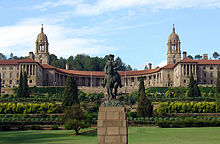

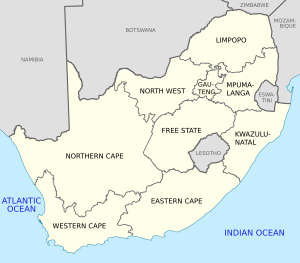
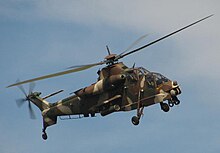






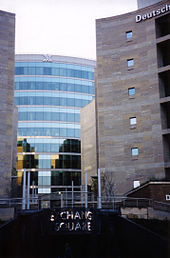
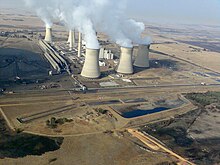
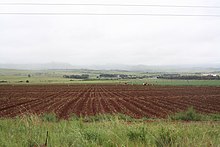



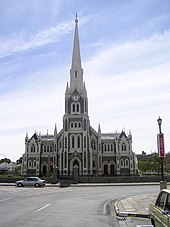


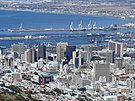




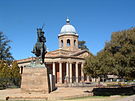





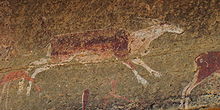
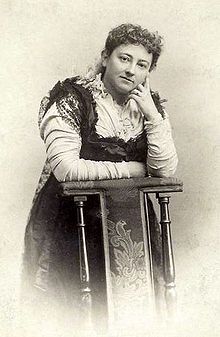

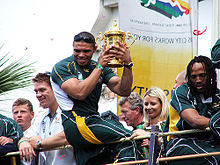


 Posted in:
Posted in: 

0 comments:
Post a Comment